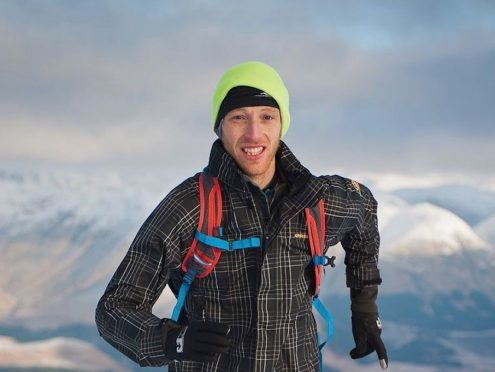If you are feeling a bit chilly after the recent arrival of winter in Scotland, spare a thought for Dr Andrew Murray.
This is somebody who can’t allow himself to become discombobulated when the mercury drops a notch or two.
He has just flown to Mongolia to compete in the Genghis Khan Ice Marathon on Friday, where the temperatures will be a teeth-chittering -35C and he will not so much be dancing with wolves as trying to evade them.
It’s not a prospect for the faint-hearted, but Dr Murray is used to racing off into the wilds these days and tackling extreme challenges with the attitude they are there to be seized by the scruff of the neck.
And why not? After all, the 36-year-old Aberdonian boasts a CV which testifies to his astonishing exploits across the world in every terrain and regardless of whether the weather adheres to the film description Some Like It Hot or the Big Chill.
In recent times, he has competed a vast number of extreme and record-breaking fundraising achievements, including running seven ultramarathons on seven continents within seven days.
He has been involved in a 4,300km trek from John O’Groats to the Sahara Desert, journeyed to the top of Britain’s seven highest peaks in the space of a day, and traversed the globe’s most testing conditions from the Terelj Mountains in Mongolia to the Altai Mountains in the Gobi Desert.
And last year, after triumphing in last year’s Genghis Khan odyssey, Dr Murray decided to run 70 miles from the finishing line to the Mongolian capital, Ulaanbaatar.
He said: “I think some people get concerned about the cold and yes, it’s very cold over there, but if you get yourself wrapped up, put on a balaclava and some extra socks and you have prepared properly, these type of events are a really brilliant experience.
“Last year, I went out and ran some miles in Royal Deeside and, of course, it was much, much colder in Mongolia than Scotland, to the point where people couldn’t defreeze the diesel, cars and trucks were stuck in the frost, and it was actually easier to run than drive.
“But I have grown used to these extremes and it wasn’t as much of a shock for me as one of my rivals, who made the journey from Brisbane. He went from 30C to -40C in the space of about 36 or 48 hours.”
Dr Murray first hit the headlines in 2011 when he covered an incredible 2,664 miles on the long and gruelling road from John O’Groats to the Sahara Desert.
At that point, researchers at Coventry University calculated that he consumed enough calories every day of the trek to power an 800kg crocodile.
He gained further headlines with an epic display in the North Pole Marathon, which attracted over 40 participants from 16 countries.
Dr Andrew Murray is a GP and Merrell UK ambassador. To find out more information about Andrew’s marathon gear head to www.merrell.co.uk
